Confessions of a Purple Sheep: How 10 Social Impact Professionals Got Their Jobs
Do you ever wonder how people get their jobs? How important your resume or networking really are? We share the secrets of how Purple Sheep- corporate dreamers who use their skills for good- got their jobs. What you find out may surprise you (6x over).
1. The Traditionalist: Apply and Interview.
The Traditionalist sees a job posting and applies. But key to the success for the Traditionalist is to complement their application with inside knowledge from networking to demonstrate a deeper understanding of the company and the job.
 Antonia, Manager of Philanthropic Giving at Covenant House:
Antonia, Manager of Philanthropic Giving at Covenant House:
“I got the interview by submitting my resume to a job posting. However, a lot of thought was put into the cover letter, making sure to highlight how my past experience would be applicable to Covenant House and not just a fundraising position in general. I also leveraged my network of friends and associates to get in touch with individuals who understood how Covenant House worked and who could serve as my references.”
 Heather, Sustainability Manager at the Retail Council of Canada:
Heather, Sustainability Manager at the Retail Council of Canada:
“I found my job through a job posting, but getting it was a multi-pronged approach. I had built strong relationships with retail members while I was at CBSR, and then further developed my knowledge of the space when I was at SustainAbility in the UK. I’m sure it also helped that the hiring manager had been following me on Twitter for years and thought I had some compelling things to say. Definitely a good excuse for using social media!”
2. The “Intrapraneur”: See and Seize
The “Intrapraneur” sees an opportunity for change within their existing company and then seizes the opportunity to make the change themselves. This is great for people with an entrepreneurial spirit and a dedication to their current organization.
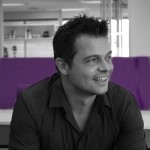 Maarten, Sustainability Manager at ING Direct:
Maarten, Sustainability Manager at ING Direct:
“I pitched my own job. I am from the Netherlands where I was working as a sustainability consultant advising governments. In 2009, I decided I wanted to live and work abroad and quit my job and moved to Vancouver. I took a job at one of ING DIRECT’s Cafés, just to get my foot in the door. This job turned into a fantastic opportunity as I got to work on developing a local sustainability strategy. At the time, sustainability was not being strategized on at ING…”
3. The Climber: Excel and Be Promoted
The Climber is a dedicated employee who is rewarded for their past achievements with promotions. Patience and persistence is a key attribute of The Climber, who also requires a long term vision of where they want to be.
 Shari, VP of Corporate Citizenship and Executive Director of RBC Foundation at RBC:
Shari, VP of Corporate Citizenship and Executive Director of RBC Foundation at RBC:
“My current role in Corporate Citizenship didn’t exist before I took it on. While in the risk management area, I was “given” the environmental risk management team in the course of a reorganization. As I learned more about that area, I became a passionate advocate internally for increasing our focus on environmental issues, risks and opportunities. The timing was right – the issue of climate change had become main-stream – and several of us developed the RBC Environmental Blueprint and the RBC Blue Water Project. Those initiatives, and the partnerships forged in the process, gained me enough visibility and credibility to be a candidate for this new role.”
 Adrienne- Head of Living Planet at Work at WWF Canada:
Adrienne- Head of Living Planet at Work at WWF Canada:
“…I went back to school to do my MBA. When I graduated, there was a posting for a job at WWF, and with a bit of luck and good timing, I got the job. I’ve been working there for three and a half years now and have been able to move up the organization from Corporate Engagement Officer, to Manager to now leading the employee engagement program.
4. The Networker: Meet and Recruit
The Networker proactively develops relationships with prospective employers so that if an opening comes up, they are tapped before a job is even posted. The Networker “reverse recruits”, reaching out to influencers in companies for informational interviews, getting the inside scoop on the job they want.
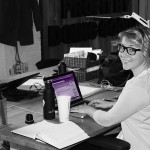 Caleigh, Projects Manager at Public Inc:
Caleigh, Projects Manager at Public Inc:
“Once I had finished writing my thesis, I volunteered to do some research for the Jane Goodall Institute whom at the time were involved with Public Inc. Upon learning about the company and doing my homework on them, I reached out to the COO – and the rest, as they say, is history.”
 Doug, Managing Director of at Corporate Knights Capital:
Doug, Managing Director of at Corporate Knights Capital:
“The CEO recruited me. We went out for lunch one day while I was in another position and before I had finished my soup I knew I would be joining. The last time I got a job that was advertised was in high school when I successfully responded to an ad to work stocking shelves in the local A&P.”
5. The Intern. Volunteer and get hired.
Typically right out of school or in between semesters, the Intern builds relationships and showcases their talents during a short-term temporary employment. The Intern is great at getting work experience and exploring organizational culture fit. It may not be lucrative financially, but there is a Return on Career in it for the Intern, in the form of recommendations, relationships and killer resume experience.
 Megan, Special Events Coordinator at United Way Toronto:
Megan, Special Events Coordinator at United Way Toronto:
“I first got involved with United Way Toronto as a student of George Brown College’s Sport and Event Marketing postgraduate program. One of our classes required that we plan and host a charity event and my team and I chose United Way Toronto as our charity. My role in the group was the ‘Charity Liaison’ and so I contacted the Events Team and setup a meeting to discuss our event. From there, they invited me to join their Special Event Committee. A position then opened up and I applied. I highly doubt I would have gotten the job if I didn’t already have a strong connection with the team and the organization.”
6. The Creative: Invent and Do.
The Creative is a visionary, risk taker who is comfortable disrupting the status quo. They see opportunities where others don’t. They’re the “make things happen” kind of people.
Darrell, Founder and Skool Principal at institute B:
“I invented it. After many years at lululemon athletica growing that company into a cultural icon and Canadian success story, I was able to step back and decide how I can make a difference. Institute B is my vehicle.”
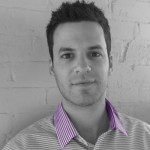 Assaf, Founder and Partner at Purpose Capital:
Assaf, Founder and Partner at Purpose Capital:
“I saw that there was a vacuum of services for the social entrepreneurship/impact investment field and decided to try and fill it. I also thought it was a smarter route to achieving the change I wanted to than I what I was doing at the time.”
Which type are you? Tweet, message, or comment below how you got your job and which strategy worked best for you.
Want more curated content delivered straight to your inbox?
Follow us on twitter @b_meaningful and like us on Facebook




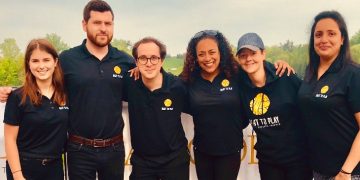

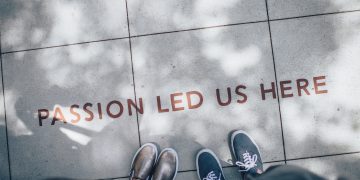
No Comment